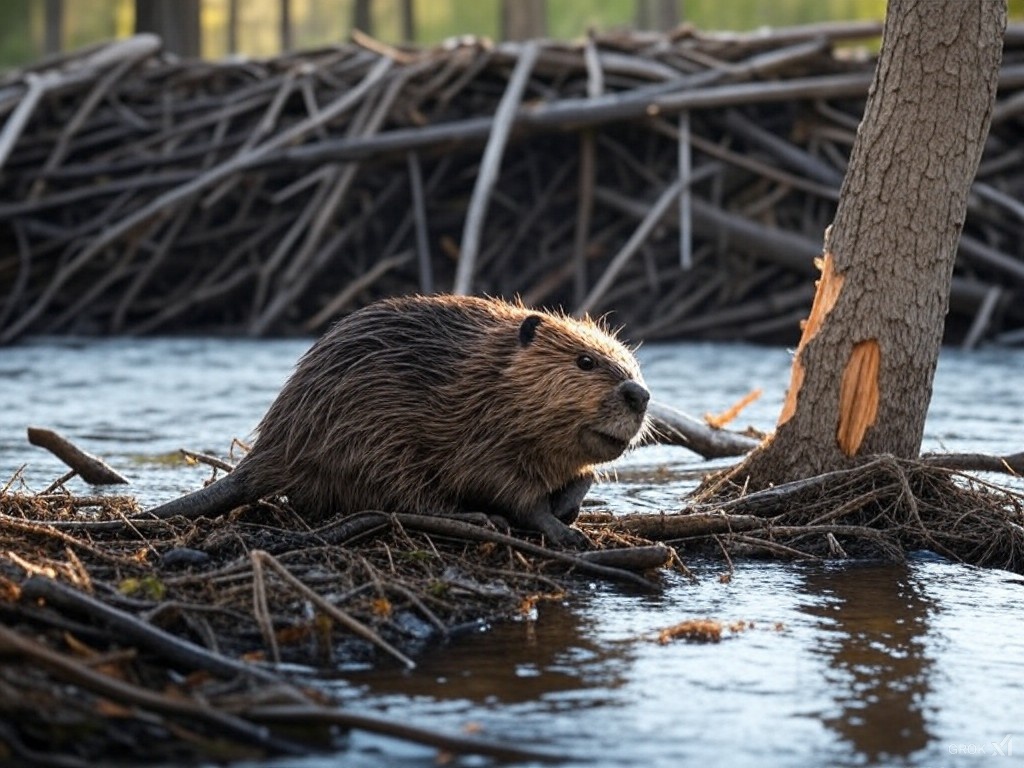Beavers, known for their dam-building activities, can cause a range of issues when they live near human settlements. Lethal trapping is done to remove the resident beavers.

Here are some of the main problems:
Flooding and Water Management:
- Flooding:
- Property Damage: By damming streams, beavers can cause water to back up, flooding roads, agricultural lands, residential properties, and septic systems. This can lead to significant property damage, including erosion and structural issues.
- Water Flow Alteration:
- Drainage Problems: Beavers can block culverts or drainage systems, leading to poor drainage, which can also contribute to flooding or create stagnant water areas, fostering mosquito breeding.
- Impact on Water Quality:
- The stagnant or slow-moving water behind dams can degrade water quality by increasing sediment, reducing oxygen levels, and promoting algae growth.
Infrastructure and Property Damage:
- Tree Felling:
- Beavers cut down trees for food and building materials, which can:
- Damage Landscaping: Ruin ornamental or fruit trees in yards or gardens.
- Safety Hazards: Felled trees can pose risks to property or people if they fall on structures or power lines.
- Beavers cut down trees for food and building materials, which can:
- Structural Damage:
- Dams and Burrows: Beavers might burrow into banks or dams, weakening structures like levees, roads, or retaining walls, potentially leading to collapses or breaches.
Agricultural Impact:
- Crop Damage:
- Beavers can eat crops or damage irrigation systems, affecting agricultural productivity.
Ecological Consequences:
- Habitat Alteration:
- While beavers create wetland habitats that benefit some species, this can be detrimental in areas where such changes are unwanted or where they disrupt local ecosystems.
- Species Displacement:
- The changes in water flow can sometimes push out native species or introduce conditions favorable for invasive species.
Nuisance and Health Issues:
- Noise: The sounds of beavers building or gnawing can be disruptive, especially in quiet neighborhoods.
- Disease: Though less common, beavers can carry diseases like giardiasis, which can affect water quality if their feces contaminate water sources.
Mitigation Strategies:
- Beaver-Proofing: Using fencing or deterrents around valuable trees or water bodies to prevent beavers from accessing or damaging them.
- Flow Devices: Installing devices that regulate water flow over or through beaver dams to mitigate flooding without removing the dam entirely.
- Trapping: In areas where beaver activity is problematic, lethal trapping might be considered, though this should be done according to local regulations.
- Landscape Management: Altering the landscape or providing alternative habitats can sometimes guide beavers away from problematic areas.
- Education: Educating landowners on coexistence strategies can reduce conflicts.
Beavers are an integral part of many ecosystems, offering benefits like habitat creation for other wildlife. However, their activities can clash with human land use, requiring careful management to balance ecological benefits with human needs. Remember, any action taken should consider the welfare of the beavers and adhere to wildlife protection laws.
